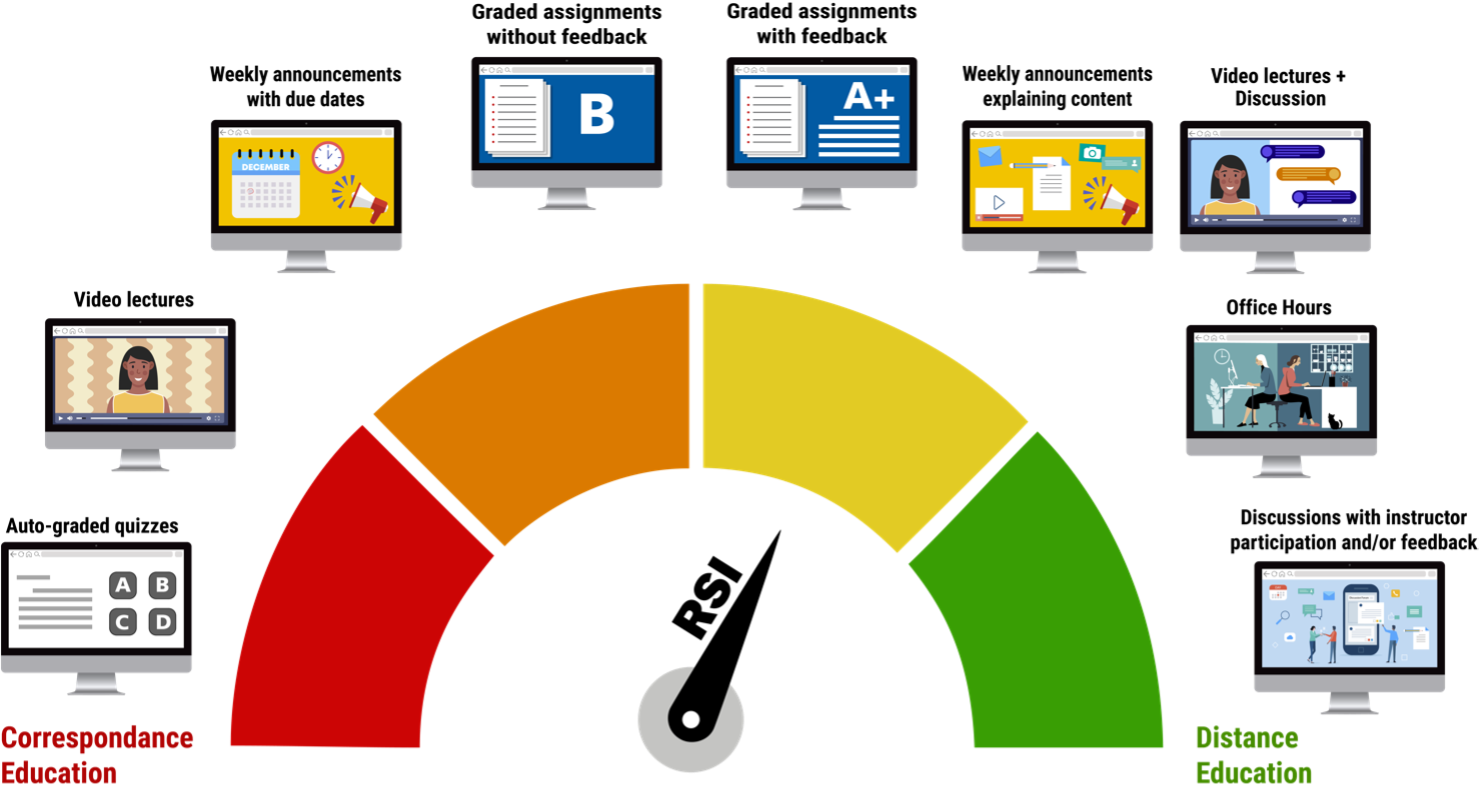Center for eLearning
Mailing Address
Center for eLearning
Cleveland State University
2121 Euclid Avenue, RT201
Cleveland, OH 44115
Campus Location
Center for eLearning, RT201
1860 East 22nd Street
Cleveland, OH 44115-2214
Phone: 216.687.3960
Fax: 216.875.9733
elearning@csuohio.edu
Regular and Substantive Interaction (RSI)
Higher Learning Commission Definition
(https://www.hlcommission.org/General/glossary.html)
Institutions are expected to ensure regular and substantive interaction between students and instructors in their distance education and competency-based education offerings. An institution ensures regular interaction between a student and an instructor or instructors by, prior to the student's completion of a course or competency:
- Providing the opportunity for substantive interactions with the student on a predictable and scheduled basis commensurate with the length of time and the amount of content in the course or competency; and
- Monitoring the student's academic engagement and success and ensuring that an instructor is responsible for promptly and proactively engaging in substantive interaction with the student when needed on the basis of such monitoring, or upon request by the student.
Substantive interaction is engaging students in teaching, learning and assessment, consistent with the content under discussion, and also includes at least two of the following:
- Providing direct instruction;
- Assessing or providing feedback on a student's coursework;
- Providing information or responding to questions about the content of a course or competency;
- Facilitating a group discussion regarding the content of a course or competency; or
- Other instructional activities approved by HLC or the program's accrediting agency.
Characteristics of RSI
- Initiated by the Instructor
- Frequent and Consistent
- Focused on the Course Subject Matter
RSI Communication Plan

(Word version - direct download)
Additional Resources regarding the Education Department requirements
- Poulin & Davis Article/Interpretation
- Inside Higher Ed
- SUNY Online Course Quality Review Rubric: RSI Infographic, Compliance and Definitions
What is CSU currently doing to promote regular and substantive interaction?
- CSU Template and Instructor Checklist: Promotes QM Principles including General standard 5 Learning Activities and Learner Interaction. The template prompts instructors to provide information about communication specifics and cadence of communications, feedback, and responses to student inquiries. Request a template for your Blackboard course.
- FOTD Course: In this course, faculty develop their course communication policy using a premade template which they can customize for their course. Participants also complete an entire module on communicating with students in Blackboard and develop a communications strategy for their course that encourages instructor presence and regular and substantive interaction. Learn more about FOTD and register!
- Best Practices for Teaching Online: Part of our FOTD and Beyond Series. Promotes regular communication, setting student expectations, establishing and maintaining a strong instructor presence and engaging students.
- Online Course Assessment Tool (OCAT): Assessment tool modified by eLearning faculty senate committee for peer review and self-review purposes. Assesses both course design and instruction.
- Office Hour Requirements/Syllabus Requirements
Mailing Address
Center for eLearning
Cleveland State University
2121 Euclid Avenue, RT201
Cleveland, OH 44115
Campus Location
Center for eLearning, RT201
1860 East 22nd Street
Cleveland, OH 44115-2214
Phone: 216.687.3960
Fax: 216.875.9733
elearning@csuohio.edu